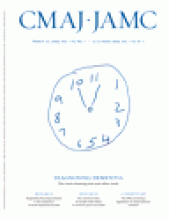- © 2008 Canadian Medical Association or its licensors
The headline of the first CMAJ editorial of 2008 was promising: Is it time for another medical curriculum revolution?1 The editors ask an interesting and timely question: Ought the time it takes to earn a medical degree be shortened from 4 to 3 years?1 They make several cogent arguments for such a move, citing economic and workforce benefits as well as asserting the move's neutrality in terms of pedagogic quality.
The editors then ask why no one seems to be paying attention to the possibility of a 3-year curriculum. In fact, the Association of Faculties of Medicine of Canada, the national voice for academic medicine, has received a great deal of national press of late for asking this very question within the context of its project, funded by Health Canada, to critically examine Canada's medical education system.
The Canadian health care system has serious and complex human resource problems. Changes such as the implementation of a 3-year curriculum need to be assessed in terms of their effect on the entire system within which they occur. Charles F. Kettering, the inventor of the electric starter, said, “We have a lot of people revolutionizing the world because they've never had to present a working model.”
We may well need another revolution in medical training, but if we are going to have one, it needs to go beyond changing the duration of medical education. Our association's project on the future of medical education will also examine issues such as the alignment of the medical school curriculum with the changing needs of our society, the representativeness of medical school graduates in light of changing Canadian demographics, the location of educational experiences and the funding of medical education and training. The fruits of our labour in this project may well provide the manifesto for a revolution, but this is by no means a foregone conclusion.
Footnotes
-
Competing interests: None declared.
REFERENCE
- 1.↵











